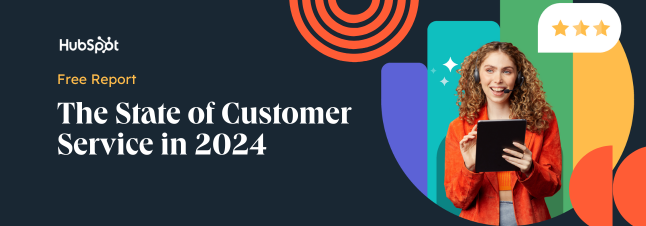We've all heard the classic examples of Apple, Amazon, Zappos, and Southwest Airlines, and how their customer focus helped them create brand new categories. But are there other customer-centric companies that we can study and learn from?
As it turns out, yes. In this piece, we'll dive deeper into five brands that are not only customer-centric, but whose focus on the customer helped them break into incredibly competitive, established industries.vs.
Customer-Centric vs. Product-Centric
Product-centric companies focus on the products they bring to the market as a way to measure success and determine strategy. Customer-centric companies focus on the customers that buy their product or service as a way to measure success and determine strategy. Most successful companies are focused on both products and customers, but this distinction is determined by the metrics and questions that are used to develop their strategy and determine their priorities as a business.
Product-centric companies often sell products that don't require a lot of effort to purchase. For example, Solo, the plastic cup company, is more product-centric because there aren't many tough buying decisions that go into purchasing a sleeve of plastic cups. Its customers are more concerned with getting a good value for their purchase rather than building a business relationship with the brand. Solo doesn't need to be as customer-centric because their customers value financial needs overall emotional ones.
Customer-centric companies instead rely on their customers' successes. These businesses are more focused on fulfilling needs that extend beyond their product or service, creating a long-term, mutually beneficial relationship with their customers. Customers achieve their goals using the company's products and services, and the company profits from the customer's continued dependence on their brand. These companies typically work very closely with their customers because they're highly invested in customer success.
It isn't a good or a bad thing to be product-centric or customer-centric. In fact, the two ends of the spectrum ideally go hand-in-hand. Think about it: If you're focused on what your customers are telling you and asking for, you're likely launching successful, high-growth products, too.
In the next section, we put together a list of companies who are well-known for their customer-centric (CC) strategies.
Customer-Centric Companies
- Slack
- SnapTravel
- Mailshake
- Segment
- Paul Reed Smith Guitars
- Whirlaway Sports
- SeatGeek
- HubSpot
1. Slack

Why is it Slack great? Some argue it's the usability. Others like how it integrates seamlessly with other services. Others say the way you share all types of files from documents to images to code, so easily. I could probably write several posts attempting to diagnose what makes Slack so magical, but one thing is clear: Slack won by being intuitive.
Customer-Centric Strategy: Offers intuitive user-interface and features.
In 2013, hadn't the world seen enough messaging apps?
Between IRC, Microsoft Messenger, GChat, Hipchat and more, it would seem the history books could be closed on messaging. Then Slack came along.
Since publicly announcing its launch in August 2013, Slack has gone absolutely gangbusters, booking a rumored $1 billion in revenue in 2017. And that's with almost no marketing budget to start out with. And just speaking anecdotally, I have yet to meet a person who doesn't like Slack.
Personally, I describe my love for Slack as follows: It lets me do anything I could think to do with a messaging platform, and then some. It's not any one feature–it's that it has nearly every feature I could ever want, and each of those features in it of itself are incredible.
I'm one of those people that emails files to themselves rather than growing up and using Dropbox. I remember discovering that I could send myself a message via Slack. And not only that, the message reads ‘Jot something down' instead of ‘Message [username]' as it does in other channels.
That level of product execution and attention to detail can only be achieved through talking to users and intensely focusing on their needs. In fact, Slack took seven months to get feedback from teams of all shape and size between their first complete version, and their launch version. As founder and CEO Stuart Butterfield said, "When key users told us something wasn't working, we fixed it — immediately."
2. Mailshake
Mailshake is an email campaign software that helps users reach out to leads in bulk. Personally, I love Mailshake — it's almost easier than sending a single message in Gmail. It has almost every feature I need, and my team at LawnStarter loves it as well.
Customer-Centric Strategy: Delights their target customers.
If you Google "cold email outreach tools" you'll find more options than you can shake a stick at. That hasn't stopped Mailshake from carving out its niche in the market.
Mailshake has seen incredible growth over the past few years, with almost no marketing budget.
How? Extreme focus on delighting their target customers.
Many cold email outreach tools try and be everything for everyone, resulting in a large number of mediocre to good features. Mailshake, on the other hand, focuses on the user that needs a lightweight, easy-to-use solution.
Would I use Mailshake to support a 100 person sales team? Probably not. But that's the point — customer centricity requires focusing on delighting your core customer. By definition, this means you need to ignore your non-core customers, which takes discipline to do.
It's not just the features that make me love Mailshake so much, it's also their support. Founder Sujan Patel is known for proactively reaching out to customers and thanking them for referring friends, as seen in the screenshot below.
3. Segment
Segment is a data collection tool that lets you centralize your customer data — like demographics, past interactions, transactions, etc. — into one location. It creates a customer-centric experience by providing its users with detailed self-service support options. This way, customers can find their own answers to questions without having to reach out to a support team in the first place.
Customer-Centric Strategy: Provides extensive self-service support.
As both a data junkie and marketer, I know the pain of using and implementing web and product analytics tools.
Google Analytics is free and easy to install, but doesn't get you much more than page views. Mixpanel gets you events and good funnels, but only gives surface level insights. Suppose I want to try a different tool? If I don't know how to code, I'll need to ask engineering to set this up.
Not to mention each ad platform and email tool you use requires its own tracking code that typically, an engineer has to install.
This changed when the founders of Segment — who were working on another company at the time — posted a simple Javascript library to Hacker News and were overwhelmed with demand. This library simply allowed you to install one line of code on your site, and send the events to any of your analytics tools with the switch of a button.
The team knew they were onto something when their repository broke 1,000 stargazers in 24 hours and decided to turn this open-sourced library into a paid product.
Here's the first place Segment shows its customer-centricity: If you follow their blog posts from that point onward, you'll see one release after another for new integrations, prioritized no doubt, by what their users were asking for. Now, they boast 200+ integrations, making it easy for marketers and analysts to use whatever tools they need.
But Segment didn't stop there. Eventually, a growing company hits the limitations of out-of-box analytics and creates their own, in-house analytics system that aggregates all of their data together. This takes a large amount of engineering time and doesn't push the core product forward.
Founder Peter Reinhart recognized this need on a series of customer visits. According to Reinhart, his customers "wanted the full power of SQL. To run deep analysis and answer detailed questions. To build recommendation algorithms. And to use business intelligence tools like Tableau, Mode Analytics, and Chartio on top of their Segment data."
So Segment built it, and I absolutely love it. I can now choose between using a fast out of box tool like Google Analytics, or an in-depth more insightful raw database query.
By focusing on their customers, the team at Segment has created a product that's grown like wildfire, and that personally, I would never think about leaving for anything else.
4. Paul Reed Smith Guitars
Paul Reed Smith Guitars is a guitar company that sells finely-crafted guitars. Aside from the quality of its product, the company has created a loyal customer base through hosting free community-building events. These events bring customers together and build communities of people who are infatuated with the Paul Reed Smith brand.
Customer-Centric Strategy: Hosts free community-building events.
Since the invention of the electric guitar, two brands have ruled the market: Fender and Gibson.
Fender guitars have a cleaner tone, Gibson a bit more aggressive. Fender has the Stratocaster and the Telecaster, Gibson has the Les Paul and the SG. Jimi Hendrix and Eric Clapton play Fenders; Jimmy Page and Slash play Gibsons.
That is, until 1985 when a man named Paul Reed Smith started his company, Paul Reed Smith Guitars.
These guitars beat out all others on many levels, starting with craftsmanship. The instrument is absolutely beautiful with extraordinary attention to detail. When you take one out of its box for the first time, it's perfectly set up and tuned. Other guitars typically require a bit of tweaking after purchase.
Additionally, Paul Reed Smith believes in innovation, but not for the sake of innovation. Their mission statement is "Guitar building is an ongoing process of discovery. We are devoted to the guitar's rich heritage while committed to new technologies that will enrich our products with uncompromised tone, playability and beauty."
In 1992, Paul Reed Smith started using CNC machines to build their guitar bodies instead of by hand. To me, a mechanical engineer, it's a no-brainer. A CNC machine is perfect; human hands are not. Fender and Gibson, on the other hand, stuck to "hand-crafting" for whatever reason.
Paul Reed Smith doesn't stop at building an incredible product, either. The company actively cultivates their fan base, which is incredible considering most people won't buy more than one of these guitars.
In 2007, they started a free event called "Experience PRS" where they opened up their factory, giving tours and showing their research and development process. They also brought in some incredible artists that you'd pay a lot of money to see live. And for those who this isn't enough for, you can join their Signature Club which gives you more access to exclusive events.
(My 17-year-old self at Experience PRS 2008 was absolutely stoked to be there. And every one of the attendees I met was equally as excited.)
Paul Reed Smith carved out a valuable niche in an old industry that seemed like there was no room by building an incredible product, continually innovating to make it better, and actively engaging their fan base long after the point of purchase.
5. SeatGeek
SeatGeek is a popular mobile app that lets users buy and sell tickets to events on their phones. The company's success is partly due to its reliable support team, who are dedicated to providing above-and-beyond customer service. Users can trust that their transactions will process smoothly and any roadblocks will be overcome with the help of the support team.
Customer-Centric Strategy: Commits to customer support cases.
I love using SeatGeek to buy tickets to live events. It has a user-friendly interface that makes it easy to find events and compare ticket prices against other vendors. It's app also has a stadium or theatre map that shows you exactly where your seats will be at the event.
It even lets you know when it thinks you're getting a good deal on your purchase by using a nifty color-code. Seats that appear to be underpriced are marked green on the map and seats that seem to be over-valued are marked red. This way I can quickly browse through my options and know I'm getting a good deal just by the color of the seat I select.
But Seat Geek doesn't stop there. Their customer service team is first class when it comes to providing phone and web support.
Case and point, once I purchased tickets on their app without realizing the tickets could only be picked up directly from the private seller. I had no way of picking up the tickets so I called SeatGeek to see what I could do.
When I got on the phone, the SeatGeek rep seemed sincerely interested in the problem I was having. I was already ready to call it quits and ask for a refund but he implored me to give him some time to see what he could do. After a brief hold, he asked me if I could give him a week to see if he could convert the hard copy tickets into digital versions that could be sent through an email. The process didn't sound too promising, but his confidence convinced me to give him a shot.
Exactly one week later I received a call from SeatGeek telling me my tickets were ready to be transferred to my email. When I inquired further the support rep told me he immediately called the private seller to set up the transaction. The rep then paid the seller for the transfer fees involved with copying the tickets to a digital version.
I was shocked that SeatGeek when through all of this trouble when I was content to just receive a refund for my purchase. That type of dedication to their customer support cases is why SeatGeek continues to be my preferred ticket vendor.
8. HubSpot
As someone who works directly above the HubSpot support department, I can whole-heartedly say they are some of the most motivated and versatile problem solvers at this company. Everything they do is dedicated to fulfilling the needs of the customer for both the short and long term.
Customer-Centric Strategy: Solves for the customer's needs, not the rep's convenience.
At HubSpot support, they have a motto that gets repeated just about every single day: "Solve for the customer's needs, not your own." This reminds them that there are no shortcuts in customer service and sometimes they need to sacrifice their own convenience for the customer's success.
It's no surprise that this team is constantly working late, putting in extra hours to ensure they solve our customers' cases as fast as possible. It's a tough job, but these employees pride themselves on their tenacity and dedication to the customer.
But HubSpot's support team isn't the only department that focuses on solving for the customer; our marketing and sales teams are also driven by this idea as well. We are constantly interviewing customers and having them share their stories about how HubSpot influence their businesses.
Most are thrilled and love to talk about how HubSpot's products transformed their businesses, but there are some who are more critical about what we can do better. We love hearing from these customers because we want to solve these problems for them, but we need them to tell us about it first. That's why our marketing and sales teams are constantly working together to ensure the voice of the customer is included in every business decision we make.
How to Become Customer-Centric
Reading through these examples, you'll notice some common themes: beautiful design, simplicity, a focus on a core audience, and delighting customers after the point of purchase.
However, you can't become customer-centric simply by copying these attributes, nor do you need to. For example, Amazon — the canonical example of customer centricity — has a pretty mediocre design and does not focus on a small niche.
Rather, customer centricity comes from the inside of your company; those common attributes are simply how the mentality manifests itself. To learn more about how to make your brand customer-centric, read this blog post about how to build customer-centric companies.
Customer Success









![How To Write a CSM Resume [+ Free Templates]](https://53.fs1.hubspotusercontent-na1.net/hubfs/53/customer-success-manager-resume-1-20241031-2293336.webp)







